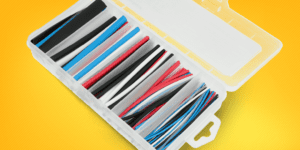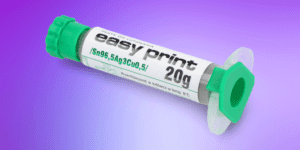Spis treści:
Today we got for you a loose – so for some perhaps a bit chaotic – guide to the heroes and heroines of many chats. We’re looking at tools for fans of good audio and video streaming, which many of us, not knowing why, are holding something back from using. Those are some of them, all not too shabby.
DLNA streaming – easy stuff
The Digital Living Network Alliance (DLNA) was founded by a group of personal computer and consumer electronics companies in June 2003 with Intel in the lead role. The organization was formed to develop and promote interoperability guidelines for sharing digital media. DLNA certified devices include smartphones, tablets, PCs, televisions, and storage servers. The first guidelines came out in June 2004 and include several public standards, including Universal Plug and Play (UPnP), which we’ll address in a moment, as well as an impressive collection of digital file formats, a wired and wireless networking standard.
DLNA has worked with cable providers, satellite services, and other telecommunications platforms to provide link protection at both ends of the data transfer. You know about that irritating DRM protection? It’s there for a reason. An additional layer of security in the form of digital rights management, or DRM (digital rights management), allows broadcast operators to transmit digital media to customers’ devices in such a way that further, unauthorized, transmission of the media is… well, just made more difficult. In March 2014. DLNA publicly released the VidiPath guidelines, originally called the “DLNA CVP-2 Guidelines.” VidiPath allowed subscription TV content to be viewed on a wide variety of devices, including TVs, tablets, phones, set-top boxes (STBs), PCs, and game consoles without additional intermediate devices from the service provider. Allowed – too bad the website is dead now, however DLNA is still popular and serviced by SpireSpark International.
AirPlay – right next WiFi & Bluetooth classics
AirPlay is a collection of Apple protocols. It allows wireless streaming between audio and video devices, device screens and photos with associated metadata. Originally implemented only in Apple software and devices, it was called AirTunes and was used only for audio streaming. Since then, Apple has licensed AirPlay as a third-party software component technology to manufacturers who create products compatible with Apple devices. What does this mean? That other manufacturers can create compatible i-devices. It’s because of AirPlay that the industry known as wireless speakers was able to grow even further (you’ll find Bluetooth ones at the link).
AirPlay 2 was announced by Apple at its annual WWDC conference on June 5, 2017. Its release with iOS 11 was scheduled for the third quarter of 2017, but delayed until June 2018. Compared to the previous version AirPlay 2 adds streaming audio to stereo speakers, lets you stream audio to multiple devices in different rooms, and control with smart assistants Control Center, Google Home or Apple Siri. This functionality was previously only available through iTunes under macOS or Windows.
The list of devices that can be AirPlay sources includes iPad, iPod Touch second generation or later, iPhone 3G and 4, and Apple TV second generation. These devices must be running Apple iOS 4.2 or later, and the app you want to stream from must have the option to enable AirPlay streaming. You can enable from your computer by running iTunes version 10.2 or later.
UPnP – convenient, but with a pinch of risk
Abbreviation for “Universal Plug and Play.” It describes devices that work with a computer system as soon as they are plugged in. UPnP is like an extetion of this idea to that allows to use Plug and Play with network equipment. Universal Plug and Play uses network protocols to enable a wide range of devices to connect and work together seamlessly.
UPnP devices can be connected via wired (e.g. Ethernet and Firewire) or wireless (e.g. Wi-Fi and Bluetooth) connections. If the product supports UPnP, it can communicate with other UPnP devices on the network. Connections are typically established using the DHCP network protocol, which assigns each connected device a unique IP address.

Most UPnP devices are virtually non-configurable and ready to go. You can easily add them to your network and use them right away. The terms sound complicated, but everything is as simple as it can be, and that’s what probably has made the protocol so popular. However… UPnP does not require authentication. It assumes in advance that all devices that attempt to connect to eaach other within the same LAN are trustworthy. Such turning a blind eye to the reliability and, most importantly, the source of these devices creates opportunities for hacking. As an additional security measure, it’s worth to include UPnP user authentication – the basic problem is that things that shouldn’t be on the global network can get into it. In short, the basic lack of authorization and configuration of devices connected to the network is the biggest plus and also the biggest minus of UPnP.
Everyday, office and party DJ – Spotify Connect
Surely such a widespread service should be included here? Of course it does. It’s suprising how many multimedia users are not yet familiar with the benefits of the Spotify platform.
With over 300 million active users worldwide of which nearly half are paid subscribers, Spotify is now the world’s largest and most popular music streaming service. But with Spotify Connect, arguably one of the most important features in the world of music streaming, we’re no longer limited to listening to our favorite music catalogs exclusively through our phone or computer.
Running wild our music and podcasts and whatnot with any compatible audio device is simple and convenient – as evidenced by the fact that Spotify rival, Tidal, has launched its own Tidal Connect feature in the face of the service’s popularity. Spotify Connect is a true private DJ for home parties – vast database contains over 60 million tracks and various playlists ready to be listened to on Hi-Fi, AV sets and smart speakers without the hassle of Bluetooth pairing.
Spotify Everywhere brings even broader capabilities to smart speakers, smart displays, game consoles, smart TVs and streaming devices, headphones, smartwatches, car audio systems and broader app integration. It works great with Amazon Echo, Google Home or Nest Audio.
Sound equipment and accessories
With the idea of taking advantage of interesting services plentiful in the market, we turn our eyes towards Arylic. Its sound modules will easily transform our wired speakers into a wireless sound system.

You can start with stereo receivers compatible with mobiles, computers and tablets. In combination with speakers, the Arylic receiver provides the highest quality sound reproduction. In addition, a microUSB sound card is available, so that the receiver can work as a digital-to-analog converter connected directly to the computer. The modules support a wide range of music platforms, including Spotify, Pandora, Amazon Music, Tidal, Deezer, Qobuz or various Internet radio stations. We can also listen locally by sharing via NAS or USB storage.
Among the Arylic goodies you can also find stereo amplifiers. This is a more specialized product, especially designed for owners of powerful subwoofers. Built-in potentiometers allow you to control not only the volume, but also the pitch. Both versions:
offer WiFi and Bluetooth 5.0 communication. A great option for uncompressed sound when transferring.
Maybe it’s time for a little pseudo smart-home? Or a springtime audio picnic at least!

How useful was this post?
Click on a star to rate it!
Average rating 5 / 5. Vote count: 2
No votes so far! Be the first to rate this post.








